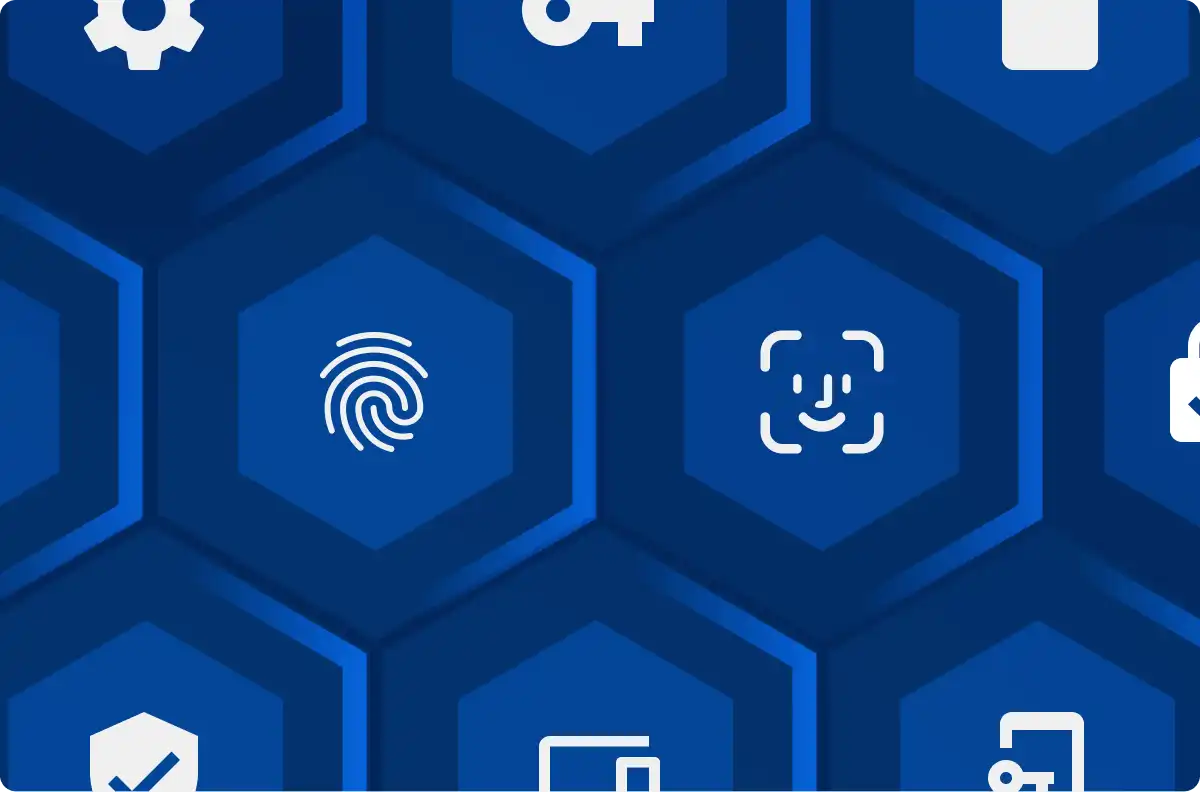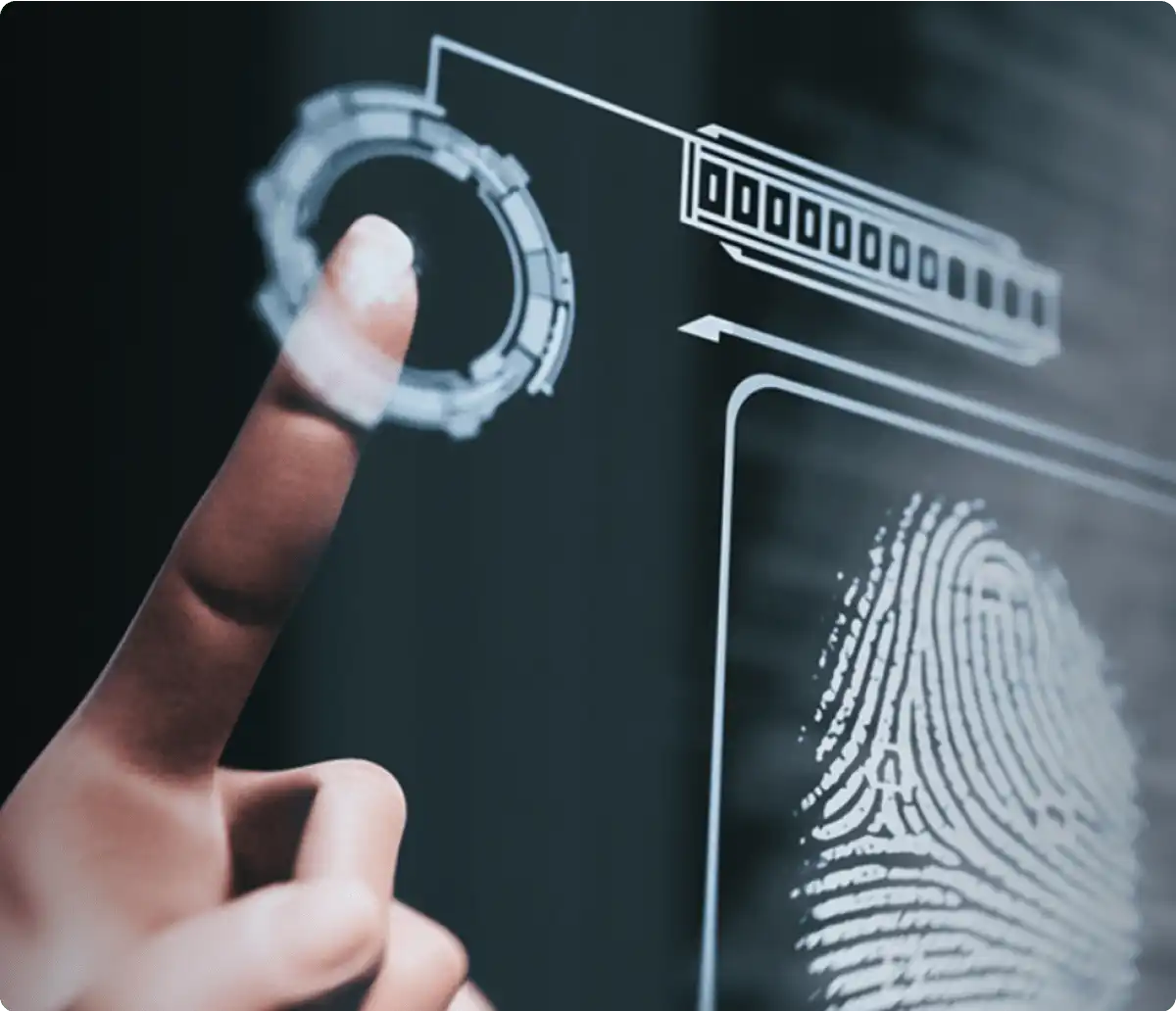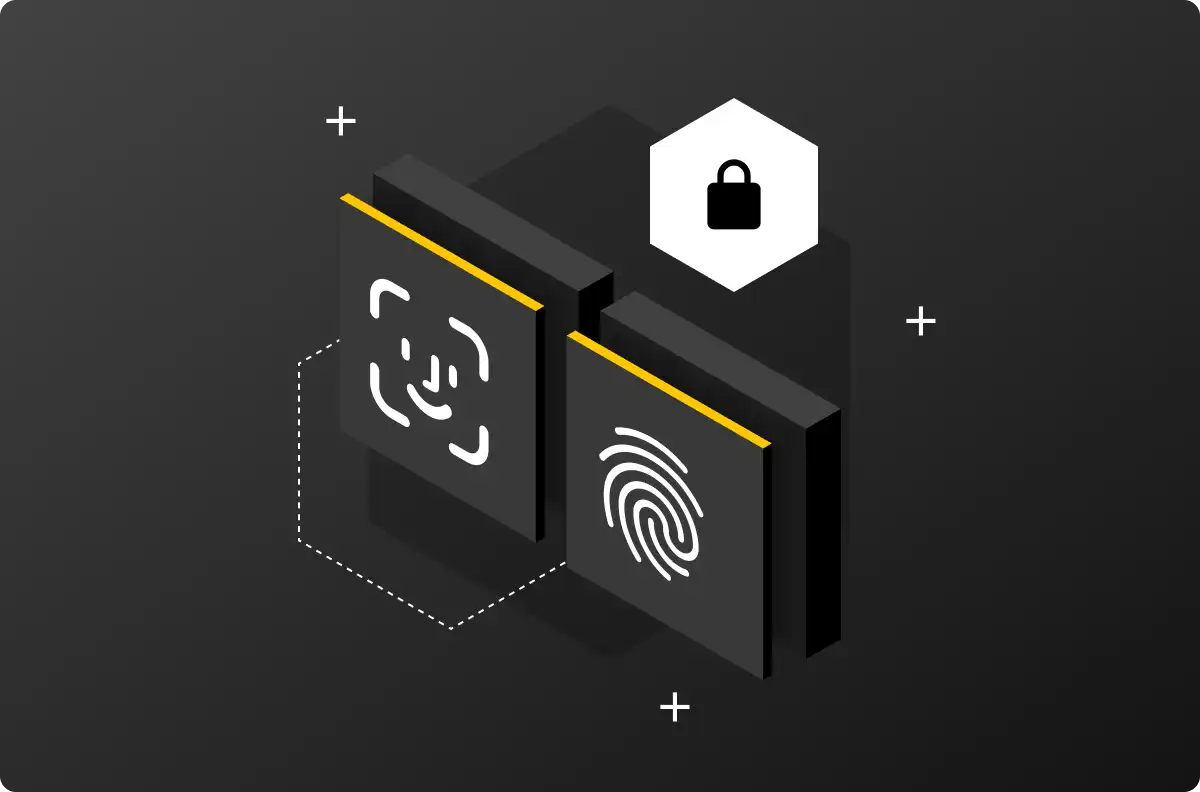Simplify Your Keeper Login Experience With Passwordless Authentication
Integrating passwordless authentication into Keeper provides the ultimate frictionless login experience for users.
Request a DemoWhat Is Passwordless Authentication?
Passwordless authentication, in the simplest terms, is a method of verifying your identity without a password. The end goals for a secure login are to determine you are who you say you are and you are permitted to access the resource you are attempting to access. Passwordless authentication can achieve these goals by identifying a user with multiple factors, such as biometrics and device ownership, without having to fumble with passwords.

How Does Passwordless Authentication Work?
By integrating a third-party passwordless provider with Keeper SSO Connect®, instead of seeing a master password prompt when you log into your vault, you will be presented with a QR code. Just use a third-party authenticator app on your mobile device to scan the QR code and you’ll be instantly logged in!
By the way, you can use the same method to log in to any passwordless-enabled site or application, not just your Keeper vault. It really is that easy!
Don’t like QR codes? Don’t worry, you’ve got other choices! Keeper SSO Connect® integrates with any SAML-enabled passwordless provider. Depending on your provider, enjoy passwordless options including:

Is Passwordless Authentication Safe?
Passwordless authentication is actually safer than traditional passwords. Passwordless authentication mitigates the attack vectors related to weak or stolen passwords, credentials and secrets – all while providing a smoother login experience. Passwordless-enabled login systems also require users to provide two or more biometric and possession factors. Which is more secure than using a password alone.
Traditional password-based authentication includes “Something You Know” as a factor. Passwordless authentication systems recognize this knowledge factor as a possible attack vector for phishing, ransomware and brute-force attacks. Remember, something you know is also something someone else can find out – and potentially use against you or your organization.

What’s the Difference Between Passwordless and MFA/2FA?
A typical password-based MFA or 2FA login experience has a user enter a password followed by a second authentication factor, commonly in the form of a one-time code sent through SMS or an authenticator application. In this scenario, the password is the first factor and the one-time code is the second factor.
Passwordless authentication is a purely multifactor authentication system that doesn’t require users to enter a password. Instead, a passwordless implementation uses authentication factors such as your mobile device, an authenticator application on the device and a process where an authenticating system establishes a cryptographic pair with the authenticator application on a user device to verify identity. Additional factors such as biometrics, geolocation, IP locking and hardware security keys, like a YubiKey, can be added to the login flow to further enhance security.

The Benefits of Passwordless Authentication
- Unphishable security by eliminating passwords
- Prevents breaches from weak and reused passwords
- Replaces knowledge factors with more secure biometric and possession factors
- Reduce password-related IT support costs
- Provides frictionless login experience
- Increases productivity

How to Implement Passwordless Authentication
The Bad News
Not all websites and applications support passwordless authentication at this time.
Don’t Worry: Keeper has Good News
Keeper SSO Connect®, which is included in Keeper Enterprise, seamlessly integrates with all popular passwordless authentication platforms, including Trusona, Veridium, HYPR, Secret Double Octopus, Traitware, Beyond Identity and PureID.
The first step in mitigating the risk posed by traditional password-based logins is to acknowledge that every organization should be using an Enterprise Password Manager to ensure every employee is using strong, unique and secure passwords. Enterprise password managers like Keeper also enable IT admins to enforce security and compliance policies, enhance authentication security and provide auditability and governance.
Next, fortify your security with the passwordless authentication solutions integrated into Keeper Enterprise to allow frictionless login to your Keeper Vault and adapt your systems for passwordless-enabled websites and applications.

Get Started with Passwordless Authentication
